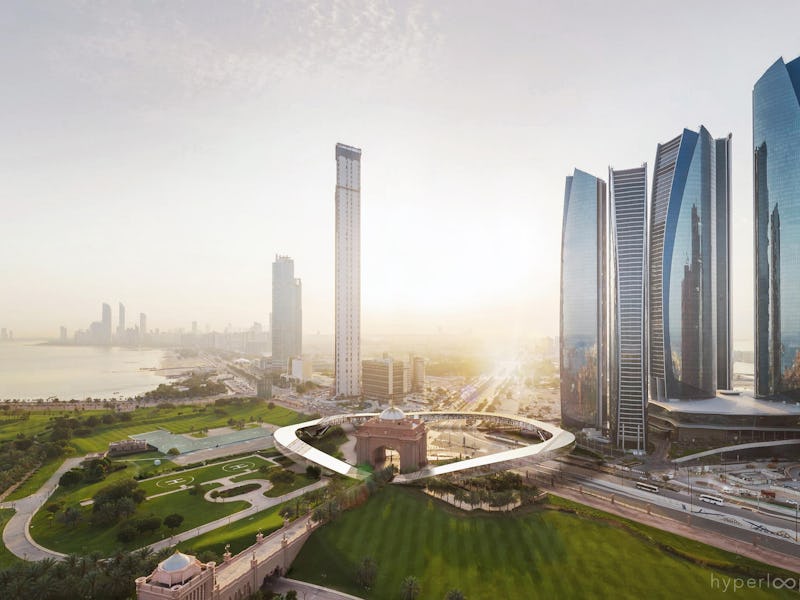During a Reddit AMA on Tuesday, engineers from Hyperloop One described how the spread of ultra-fast hyperloop will dramatically change our cities in the coming years.
“Hyperloop is the first new major mode of transportation in 100 years,” began the introductory post of the AMA. In addition to being extremely fast (moving up to 700 miles per hour), Hyperloop is designed to be energy efficient, safe, and affordable. When it comes, it will likely bring about huge structural changes to the United States and even “change the concept of urban,” wrote one engineer.
What might some of these changes look like?
5. A remote area like Utah’s Emery County could become the suburbs for Silicon Valley.
Hyperloop will bring “improved accessibility and increased property values,” wrote Sara Luchian, the company’s Senior Business Strategist. It will become so quick and easy to travel between places that used to seem far apart — Elon Musk, who invented the concept of Hyperloop, estimates that the system could bring passengers between New York City and Washington, D.C. in just 29 minutes — that people will begin flocking to previously-remote areas. Folks who work in cities but wish to live elsewhere will find a whole new range of options at their disposal as new suburbias begin popping up in rural areas. Property values in those places will likely surge in response. Silicon Valley employees may head to a quiet place far outside the Bay Area to build their lives outside of work, like eastern Utah’s Emery County (which now has a mere 10,000 residents).
A rendering of an imagined hyperloop station in Dubai by Hyperloop One.
4. The “Greater New York City Area” could extend to Ohio.
“Urban planning will become regional planning as Hyperloop shrinks travel time substantially,” wrote Dapeng Zhang, the company’s Transportation Economist. If hyperloop could bring someone from New York City to D.C. in 29 minutes, that person could probably get from New York to Cleveland or Columbus in about twice that time. An hour-long commute isn’t abnormal for folks who both work and live inside New York City, so this isn’t an absurd possibility. Once hyperloop enables new commuting and travel patterns to develop within a region, developers will start planning on not just a city-wide, but also a regional scale.
3. Connectivity circuits like the “Texas Triangle” could become irrelevant.
Hyperloop One’s Director of Software Engineering, Kyle Wall, revealed that one of the initial hyperloop routes the company is considering would go along the Texas Triangle (or “Texaplex”), the megaregion made up of Austin, San Antonio, Dallas-Fort Worth, and Houston. But hyperloop won’t just speed up transit between already-connected areas: It will also make huge swaths of new territory accessible. The cities within the “Texas Triangle” are grouped as such in part because they are connected by three highways; hyperloop will provide speedy transit between so many new parts of Texas that it may stop being useful to describe a “triangle” of connectivity and population density.
A rendering of an imagined hyperloop station in Dubai by Hyperloop One.
2. A random place like Somerset, Massachusetts could suddenly be popping.
Per Wall’s comment, another initial route Hyperloop One is considering would run between Boston and Somerset. Zhang predicted that hyperloop development will create “dense and diversified development around Hyperloop station areas,” which could mean an economic and cultural boom for the obscure town of Somerset (population: about 18,000) in the southern part of the state. Taking hyperloop transit to Somerset will be quite cheap, and therefore people with a wide range of incomes will be able to visit or live there, which will lead to “diversified” development that appeals to a wide range of needs and interests. At least until the whole place becomes gentrified.
A rendering of the inside of an imagined hyperloop station in Dubai by Hyperloop One.
1. Huntsville, Alabama could become a sushi paradise.
“We’re considering both freight and passenger routes,” wrote Sr. Manufacturing Engineer Matt Matsumoto. “We are investigating several routes connecting sea ports with inland distribution centers which could reduce large truck traffic in urban areas.” People generally discuss hyperloop as a way to transport people, but Hyperloop One is theorizing about transporting goods, too, which means that unconventional places could become commercial hubs and have access to goods that are usually only available in urban or coastal areas. A predictive example could be Louisville, which is known for having great seafood because it hosts Worldport, the United Parcel Service’s worldwide hub, allowing fish to be flown in fresh even though it’s far from the ocean. Any place that gets connected to the coast by hyperloop — say, Huntsville, Alabama, which is far from the Atlantic but could be easily linked with hyperloop — could benefit in a similar way.
Hyperloop is still in its preliminary stages of development. Hyperloop One only completed the second phase of testing on a prototype above-ground system in the Nevada desert in May; The Boring Company, a competitor, just received “verbal approval” to build a loop a few weeks ago.
But hyperloop will make an enormous impact once it does arrive, and our communities will likely never be the same.
